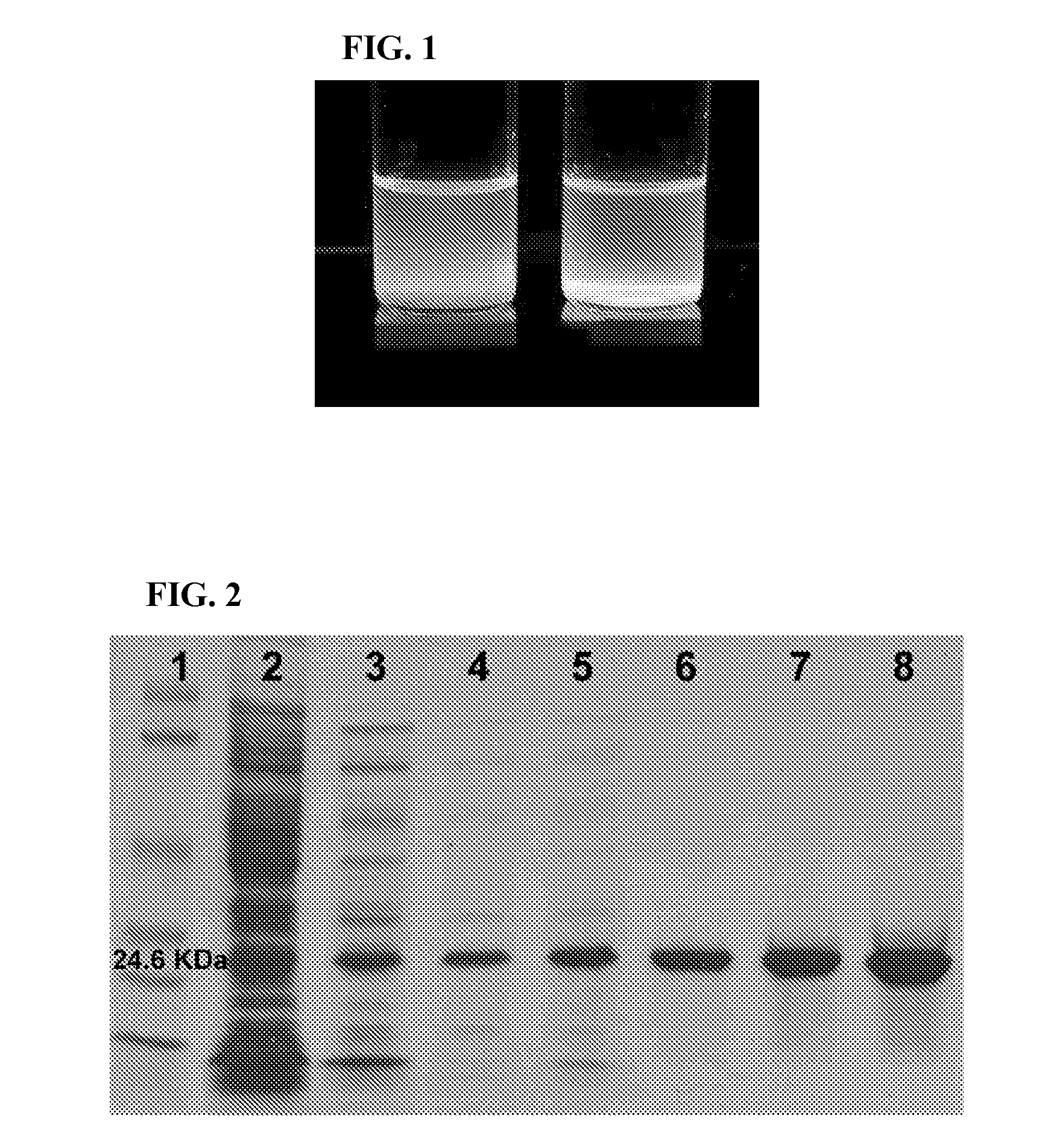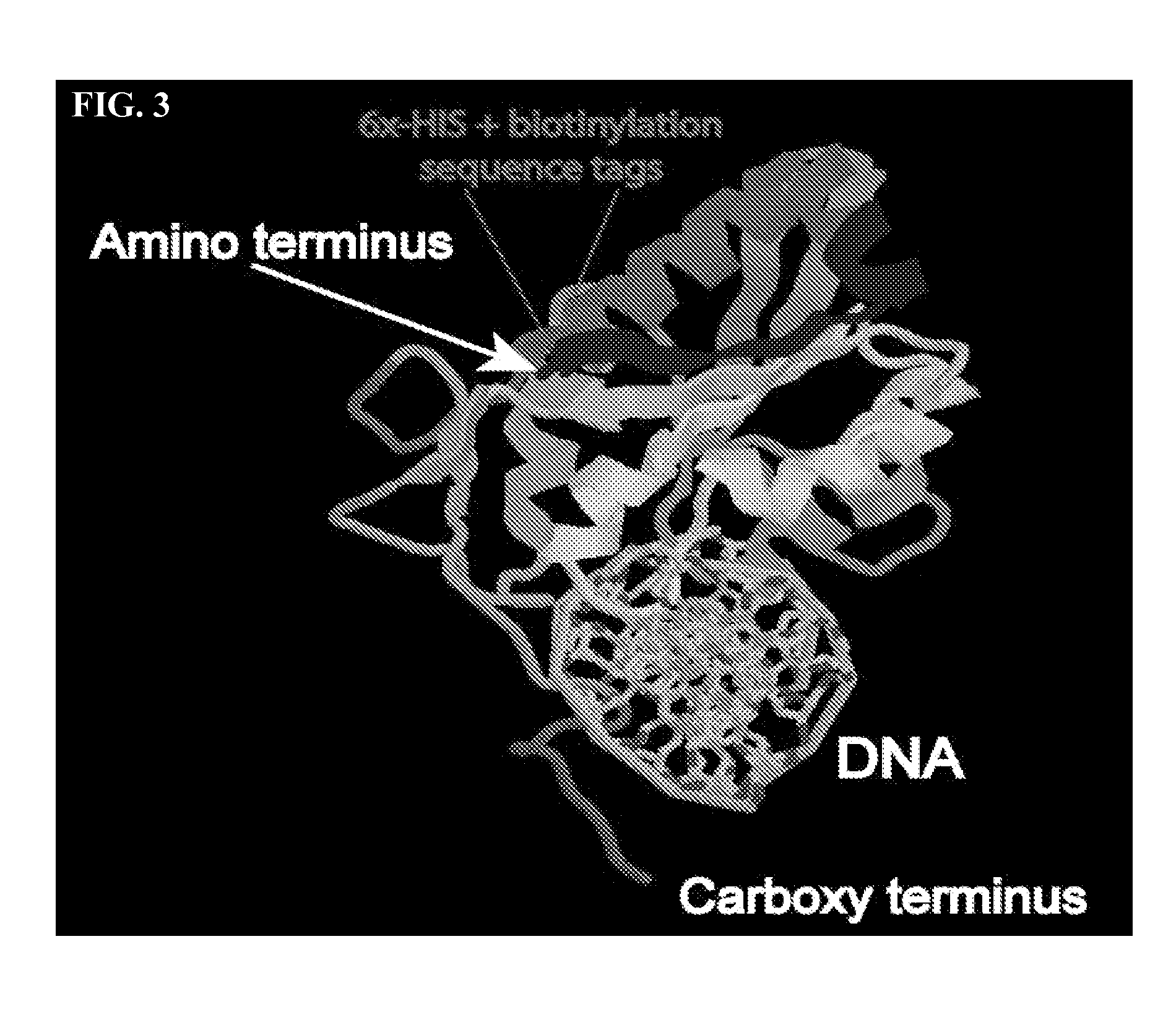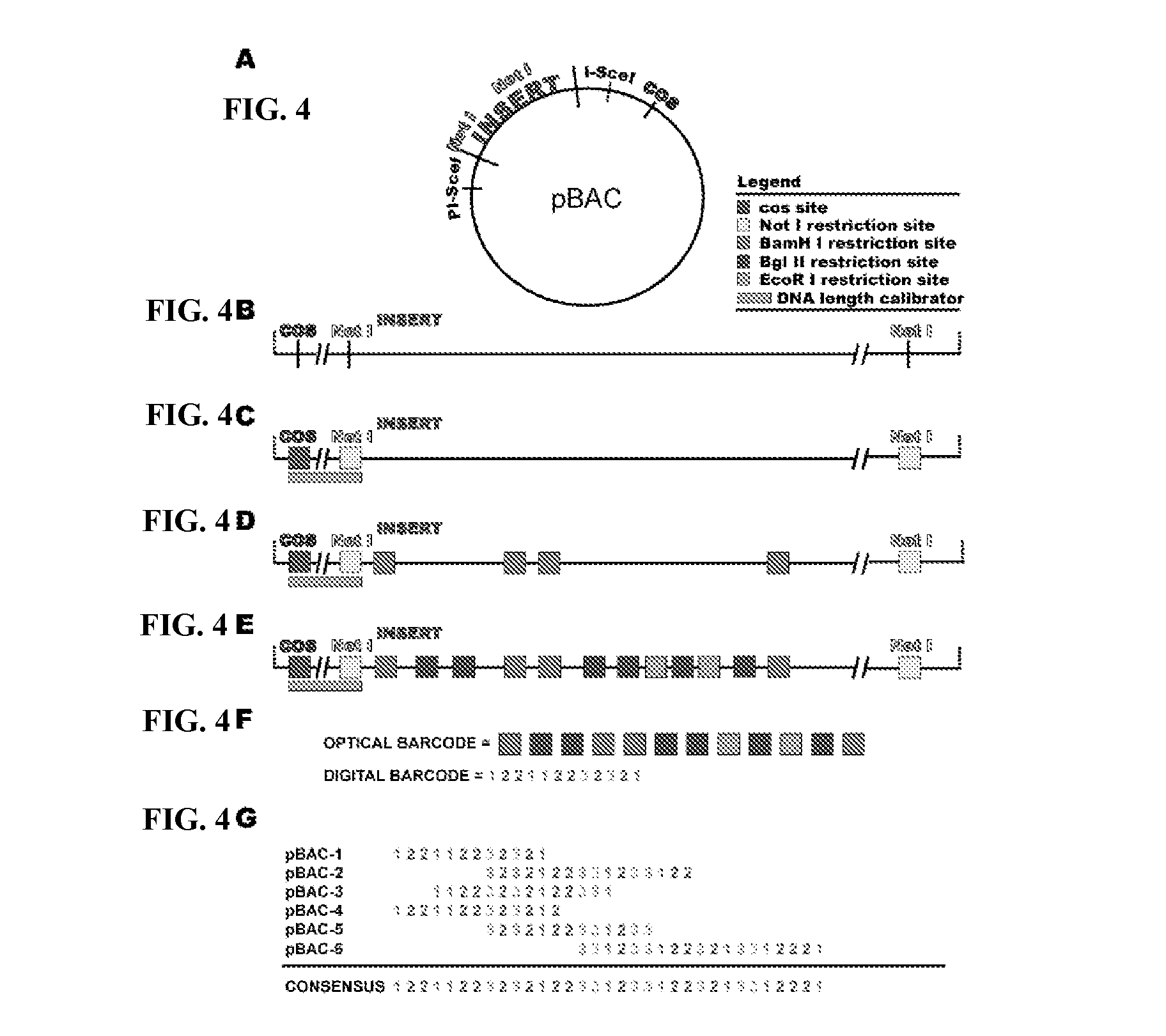Optical fingerprinting of nucleic acid sequences
- Summary
- Abstract
- Description
- Claims
- Application Information
AI Technical Summary
Benefits of technology
Problems solved by technology
Method used
Image
Examples
example 1
Purification of Recombinant Cut-Deficient BamHI
[0090] A histidine tag was fused to the N-terminal end of the D94N sequence and it was ligated into the T7 expression vector pIVEX (Roche Diagnostics, Indianapolis, Ind.). This construct was electroporated into a MDS42 E. coli strain (Scarab Genomics, Madison, Wis.) containing T7 polymerase regulated by the auto-inducible rhamnose operon. This procedure was required as it was discovered that even tiny amounts of expression (e.g. from a “leaky” promoter) prior to induction in a standard host cell (such as, for example JM109) failed to produce measurable amounts of D94N and even induced numerous mutations in the D94N sequence. This problem was solved using MDS42 cells as an expression host. Ni-NTA purification of the expression product typically yields more than 100 mg protein per 250 ml culture. This product is easily purified and washed using imidazole as shown in FIG. 2.
example 2
Bioconjugation of QDs to cdRE
[0091] Recombinant D94N molecules were used in an electrophoretic mobility shift assay using 1.5% agarose. FIGS. 5A and 5B show the results of mobility shift assays with the D94N protein. FIG. 5A EtBr stained gel of BpmI digested pGEM3Z with unlabelled D94N: Lane 1, marker; lane 2, pGEM3Z; lane 3, pGEM3Z+D94N cell lysate; lane 4, pGEM3Z+purified 6×His-D94N. FIG. 5B QD-conjugated D94N: lane 1, marker; lane 2, pGEM3Z; lane 3, pGEM3Z+QD labeled 6×His-D94N. The QD-labeled D94N proteins caused an enhanced mobility shift of BpmI-linearized pGEM-3Z (compare FIG. 5B, lane 3 with FIG. 5A, lane 4). The results demonstrate that D94N binds stably to the BamHI site in pGEM-3Z (FIG. 5A), but does not cleave the DNA. This shows that the D94N protein, even with the HIS tag attached, behaves as the native D94N. Similar mobility shifts are observed with D94N / QD bioconjugates where the QDs have surface-capping layers consisting of DTT, cysteine, or mercaptoacetic acid (no...
example 3
Quantum Dot Labeling of Cut-Deficient Restriction Enzymes: Site-Specific Biotinylation of D94N
[0092] To correct the problem of binding-site occlusion a new D94N protein containing a biotinylation tag, a 15 amino acid sequence that is specifically biotinylated by the E. coli birA gene was constructed. The N-terminal placement of the tag is almost completely opposite to the DNA binding site (FIG. 3) and is freely available for interaction with streptavidin, to which QDs directly can be directly bioconjugated.
[0093] In vivo biotinylation may be more efficient than in vitro methods. Therefore, the D94N gene containing the biotin target peptide sequence and the E. coli biotinylation gene birA were co-transformed into MDS42. In this investigation the inventors chose to put the D94N and birA constructs are on separate T7-promoter vectors containing ampicillin and chloramphenicol markers respectively. The unmodified birA gene was placed into a CAM-selectable single-copy vector (pKG15) und...
PUM
| Property | Measurement | Unit |
|---|---|---|
| Elongation | aaaaa | aaaaa |
Abstract
Description
Claims
Application Information
 Login to View More
Login to View More - R&D
- Intellectual Property
- Life Sciences
- Materials
- Tech Scout
- Unparalleled Data Quality
- Higher Quality Content
- 60% Fewer Hallucinations
Browse by: Latest US Patents, China's latest patents, Technical Efficacy Thesaurus, Application Domain, Technology Topic, Popular Technical Reports.
© 2025 PatSnap. All rights reserved.Legal|Privacy policy|Modern Slavery Act Transparency Statement|Sitemap|About US| Contact US: help@patsnap.com



